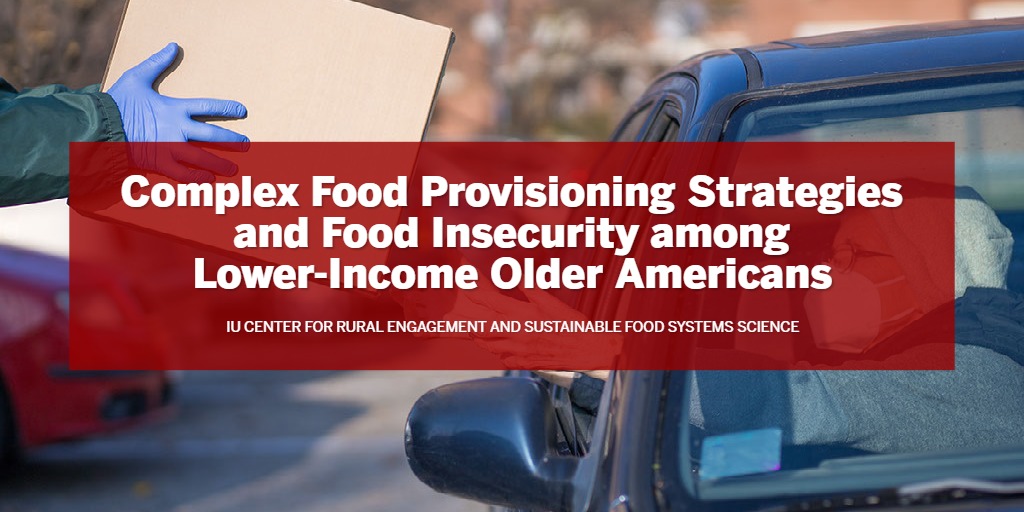- Email:
- burris@iu.edu
- Campus:
- IU Bloomington

Project abstract
Approximately 8% of U.S. households with older adults are food insecure, and more than 5 million older adults participate in the Supplemental Nutrition Assistance Program (SNAP). However, this demographic, particularly those in rural communities, have been largely excluded from food insecurity research. Our project uses mixed methods to study food insecurity among older adults in rural Indiana and a critical analysis of the effectiveness of SNAP for older adults with special dietary needs. More specifically, we are investigating the barriers to accessing and consuming safe and nutritious foods among older adults and the complex provisioning strategies they may use to mitigate food insecurity.
Campus partners
Sustainable Food Systems Science Initiative
Critical Food Studies Lab, IU Food Institute
Department of Anthropology and Geography
Center for Aging and Community
Community partners
Hoosier Upland's Area 13 Agency on Aging
Purdue Extension
City of Linton
City of Bedford
Mitchell Senior Center
Lincoln Hills Development Corporation
Counties involved
Lawrence, Orange, Crawford, Greene
Project abstract
Nearly 14% of households with children are food insecure in the U.S., and 38% of those households have children older than age 6. Indiana has higher-than-average food insecurity rates, possibly due to the fact that food insecurity is found to be higher in non-metropolitan areas. Despite these statistics, both teens and rural communities have been left out of food insecurity research and initiatives. This is of grave concern as teens are particularly vulnerable to food insecurity due to biological, nutritional, and social experiences unique to this life course stage. Through working with teens and their communities, this project seeks to characterize the prevalence of food insecurity among teens in rural southern Indiana. We aim to understand, through the voices of teens, what food insecurity is like for teens and their families and compare experiences across Bloomington and nearby rural communities. Ultimately, we aim to improve food insecurity for teens by working with them, their communities, and their schools to establish the extent of the issue and share teen's recommendations for innovations designed to meet the unique needs of teens.
Campus partners
Sustainable Food Systems Science Initiative
Departments of Anthropology and SPEA
Community partners
The Bloomington Food Policy Council
Hoosier Hills Food Bank, Girls Inc.
Flatrock Public Schools, Edgewood High School
Harmony Public Schools
Volunteers in Medicine of Monroe County
Counties involved
Monroe
